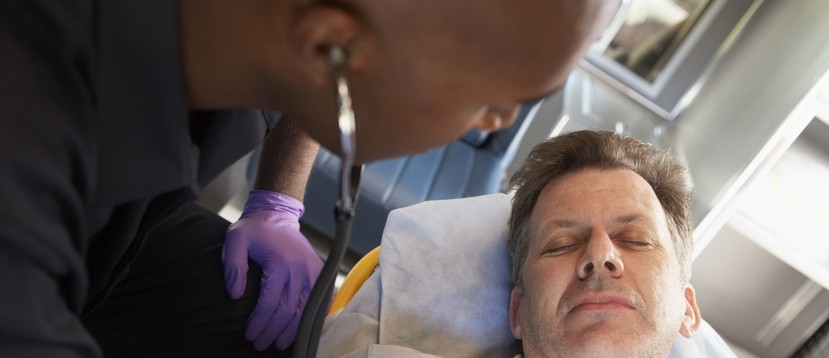
Though I was an experienced nurse, I thought I had it all figured out as a brand-new clinical educator.
I assumed that what students needed to develop and practice was the SKILLS they had been taught in school.
Why have only a couple of students pass meds when all of them needed this experience! Therefore most of my students passed meds every clinical and I even looked for opportunities to insert catheters and nasogastric tubes.
This emphasis would prepare my students for practice, right?
Wrong!
I was a living example of the truth contained in Benner’s Novice to Expert theory. Just as novice nurses are task oriented because of their clinical experience (Benner, 1982), I too was TASK oriented as a novice nurse educator.
What is the Main Point of Clinical Education?
The overall objective of clinical education is to prepare students to be SAFE in clinical practice.
This includes basic aspects of safety such as the “rights” of medication administration, but also an an emphasis of applying and integrating clinical reasoning to think more like a nurse when providing patient care.
There are two essential components of clinical reasoning that can be asked as a QUESTION to students so you have a starting point to introduce this nurse thinking skill in your clinical setting.
- Recognizing what clinical data is relevant and why?
- What is your priority? This needs to include both the nursing priority as well as educational priorities and what will be taught that day in clinical.
These questions must be asked repeatedly throughout the clinical day as students collect data from the chart, collect the first set of vital signs and assessment data, as well as at the end of the clinical day with any possible changes.
But like any skill taught in nursing, PRACTICE is required to think more like a nurse using these two components of clinical reasoning
You can strengthen these aspects of clinical reasoning by using the first case study in my brand-new series of three sequential case studies titled Clinical Reasoning 123.
This is the beginning of case study #1: Recognizing RELEVANCE and PRIORITY Setting:
Sepsis Case Study
Sepsis is an insidious killer that often goes unrecognized until it is to late. To help students recognize signs of EARLY sepsis that is progressing to septic shock, let’s use my case study on sepsis and see if students could recognize RELEVANT clinical data in this scenario.
History of Present Problem:
Jean Kelly is an 82-year-old woman who has been feeling more fatigued the last three days and has had a fever the last twenty-four hours. She reports a painful, burning sensation when she urinates as well as frequency of urination the last week. Her daughter became concerned and brought her to the emergency department (ED) when she did not know what day it was. She is mentally alert with no history of confusion. While taking her bath today, she was weak and unable to get out of the tub and used her personal life alert button to call for medical assistance.
The nurse colects the following data:
| T: 101.8 F/38.8 C (oral) |
| P: 110 (regular) |
| R: 24 (regular) |
| BP: 102/50 |
| O2 sat: 98% room air |
Pain Scale:
| Provoking/Palliative: | Nothing/Nothing |
| Quality: | Ache |
| Region/Radiation: | Right flank |
| Severity: | 5/10 |
| Timing: | Continuous |
The nurse recognizes the need to validate his/her concern of fluid volume deficit and performs a set of orthostatic VS and obtains the following:
| Position: | HR: | BP: |
| Supine | 110 | 102/50 |
| Standing | 132 | 92/42 |
| Current Assessment: | |
| GENERAL APPEARANCE: | Resting comfortably, appears in no acute distress |
| RESP: | Breath sounds clear with equal aeration bilaterally, nonlabored respiratory effort |
| CARDIAC: | Pink, warm and dry, no edema, heart sounds regular-S1S2, pulses strong, equal with palpation at radial/pedal/post-tibial landmarks |
| NEURO: | Alert and oriented x2-is not consistently oriented to date and place, c/o dizziness when she sits up |
| GI: | Abdomen soft/nontender, bowel sounds audible per auscultation in all four quadrants |
| GU: | Dysuria and frequency of urination persists, right flank tenderness to gentle palpation |
| SKIN: | Skin integrity intact, lips dry, oral mucosa tacky dry |
Recognizing RELEVANCE
What nurse collected clinical data did you recognize as relevant and why? In order to think like a nurse by using clinical reasoning, relevant clinical data must first be recognized and then correctly interpreted (Tanner, 2006).
In this scenario, what clinical data is RELEVANT?
These are my observations (fully developed answer key with rationale included in purchased case study)
History Present Problem:
- More fatigued for the last 3 days
- Fever the last 24 hours
- Painful, burning sensation when she urinates as well as frequency of urination the last week
- Did not know what day it was. She is mentally alert with no history of confusion
- While taking her bath today, she was weak and unable to get out of the tub and used the help button to call for medical assistance.
VS:
- T: 101.8 F/38.8 C (oral)
- P: 110 reg.
- R: 24
- BP : 102/50
- MAP : 67
Pain Scale:
- Right flank pain, continuous, 5/10
Ortho BPs:
| Supine | 110 | 102/50 |
| Standing | 132 | 92/42 |
- Heart rate increased >20 beats with change of position
- SBP decreased with change of position
- Therefore this is a POSITIVE orthostatic finding
Nursing Assessment
- NEUROLOGIC: Alert and oriented x2-is not consistently oriented to date and place. c/o dizziness when she sits up
- GENITOURINARY: dysuria and frequency of urination persists,
- right flank tenderness to gentle palpation
- SKIN: Skin integrity intact, lips dry, oral mucosa tacky dry
Nursing PRIORITIES
Once relevant clinical data is recognized, now the nurse needs to do something. The following four questions close out this brief clinical reasoning case study:
- What is the primary problem that your patient is most likely presenting?
- What nursing priority(ies) will guide your plan of care?
- What interventions will you initiate based on this priority?
- What educational/discharge PRIORITIES will be needed to develop a teaching plan for this patient and/or family?
How Did You Do?
Because this case study is open ended it is readily apparent if relevant clinical data was missed by students.
How did you do?
Whether you are a student or educator were you able to recognize and identify relevant clinical data?
By using other topics, you can practice this is essential component of clinical reasoning in the safety of your classroom or clinical post-conference setting.
How to Use
This case study is case study #1 in my new series Clinical Reasoning 1-2-3 that are THREE short, sequential case studies that are only 2-3 pages and can be completed in about 15-20 minutes start to finish.
This makes it possible to easily integrate as an active learning tool after teaching on a topic related to this case study.
If you are teaching in the clinical setting, during post-conference, once reflection of the clinical day has taken place, finish strong and use this case study for the last 15 minutes to practice clinical reasoning with a topic relevant to your clinical setting.
In Closing
In order to clinically reason, students must be able to recognize relevant clinical data as well as interpret this data correctly by identifying correct nursing priorities.
Use my new series of Cinical Reasoning 1-2-3 to develop and practice the thinking of this essential skill.
When clinical reasoning is understood, applied and used by students in the clinical setting you will have accomplished the primary objective of clinical education…student safety.
Safety is much more than just the rights of safe medication administration, but requires that students are able to clinically reason and prevent complications from progressing needlessly by rescuing their patient before it is too late.
What do you think?
How have you brought relevant, active learning to your classroom?
Comment below and let the conversation begin!
Keith Rischer – PhD, RN, CEN
As a nurse with over 35 years of experience who remained in practice as an educator, I’ve witnessed the gap between how nursing is taught and how it is practiced, and I decided to do something about it! Read more…
The Ultimate Solution to Develop Clinical Judgment Skills
KeithRN’s Think Like a Nurse Membership
Access exclusive active learning resources for faculty and students, including KeithRN Case Studies, making it your go-to resource.



